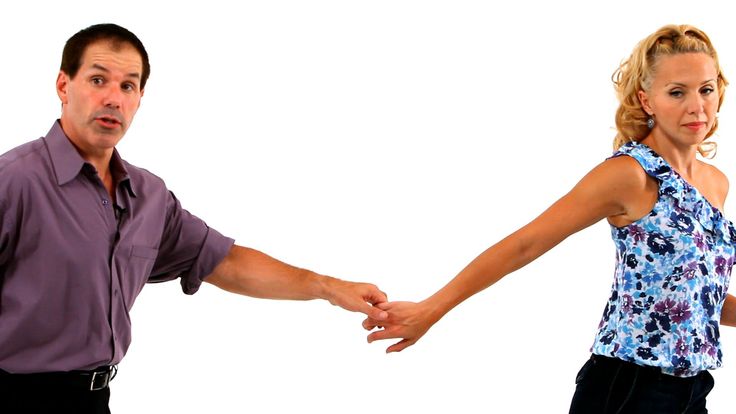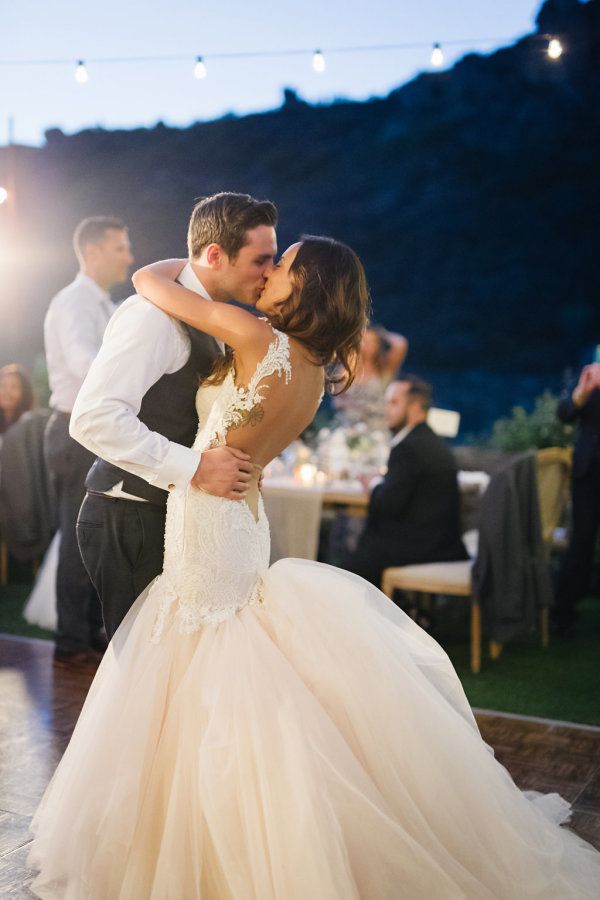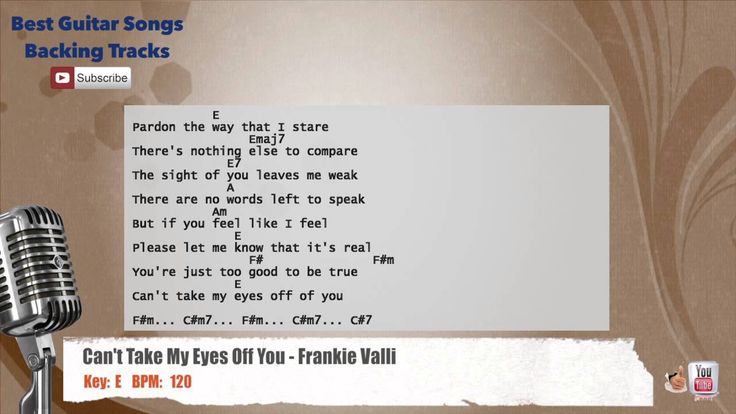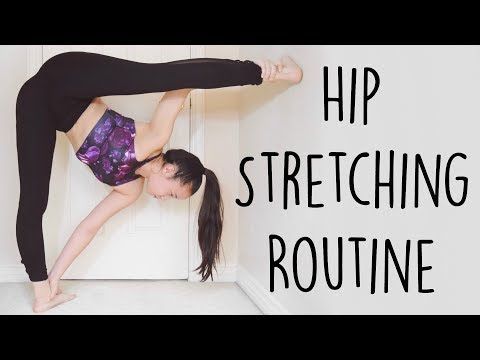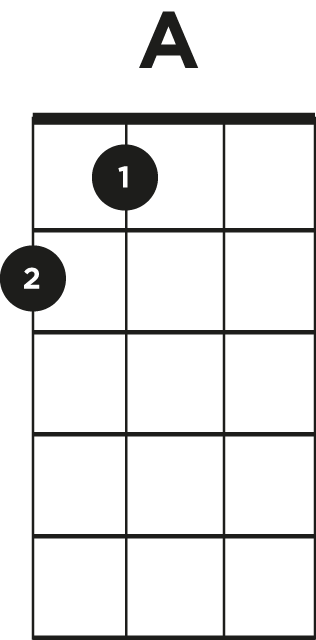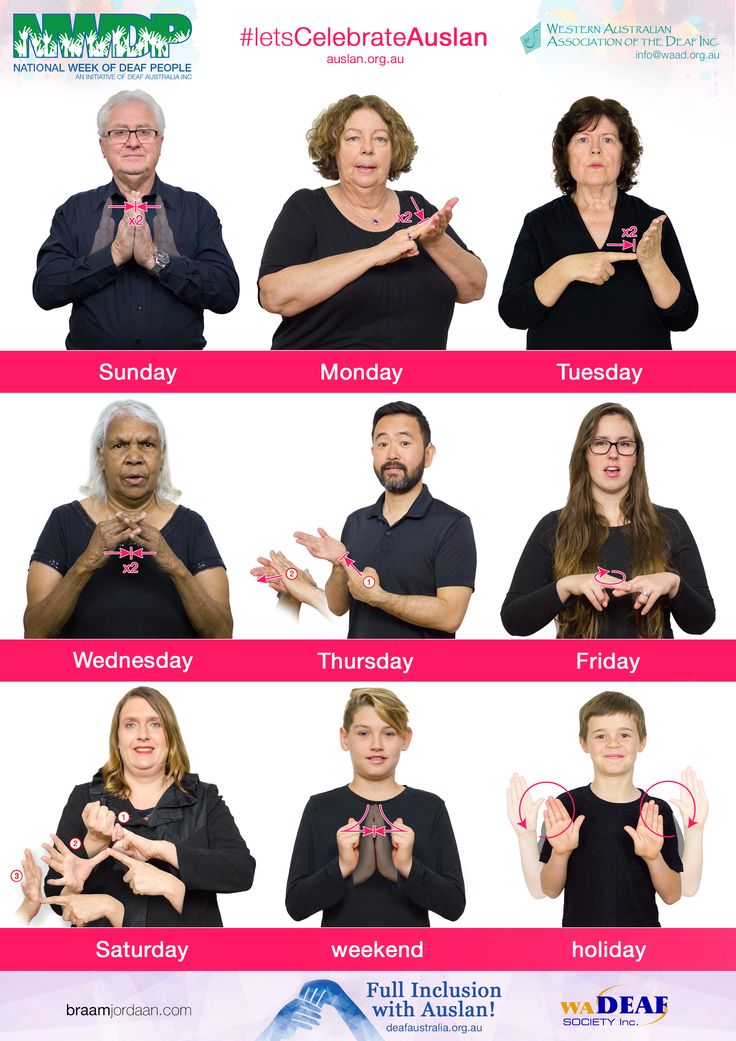Learn how to country swing dance
Country Swing Dance Basics | Everything You Need to Country Dance!
What is Country Swing?
The likely origin of country swing came as hustle dancers followed John Travolta off the disco dance floor and into the country bar after the hit movie Urban Cowboy. While western swing music tracks back to the 1930’s or 1940’s the dance style of Country Swing as we see it today look a lot like the hustle of the 1970’s. It’s a simple, high energy dance style that doesn’t require a lot of dance floor an is perfect for crowded country bars and dance halls.
Although this video is titled “what is country two step” it really talks about the history and progression of country dancing in general – Plus it’s pretty entertaining!
Country Swing Dancing
Country Swing Dancing is now a popular dance style especially in Texas, Oklahoma and California. Really though I’ve seen it in country bars outside the USA in places like Calgary Canada. It’s a super fun dance that can be seen anywhere there is a country or western influence. While there are other types of swing dances like west coast swing, or east coast swing, country swing is its own style!
Basic Country Swing Dance Steps
The basics of country swing are easy! With just a few moves you’ll be dancing the night away. All you need are the basic, some turns, a hammerlock, cradle, the slide and a signature of country swing, the lean! You can learn them all below!
Jump to a move with these time stamps:
Basic Technique 1:20
Basic Step 2:35
Turns 4:27
Hammerlock 9:43
Cuddle 11:31
Lean 15:18
Slide 20:00
Country Swing Moves
Ok this is where it gets fun! There are endless country swing moves and patterns you can do.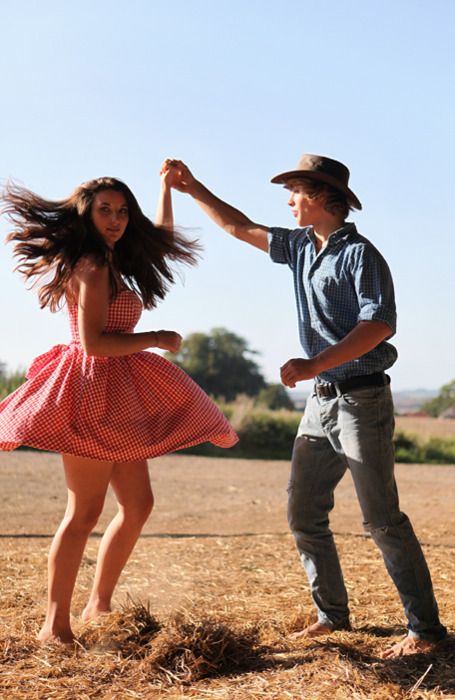 Again the best part is they are all pretty darn easy. In the video below we walk you through some of the most common cool moves you’ll want to learn for your next night out dancing!
Again the best part is they are all pretty darn easy. In the video below we walk you through some of the most common cool moves you’ll want to learn for your next night out dancing!
Country Swing Dance Songs
While we have lists of our favorite east coast swing songs, west coast swing songs and even country slow dance songs, we have to suggest a couple friends for the best country swing dance music. This country swing spotify playlist will be sure to get you up dancing.
Country Swing
Ok so at this point you’re hooked on dancing right? You might be wondering what’s next? Well the dance world is big and there are lots of dances to learn. If you want a step by step way to improve not only your country swing but also dances like country two step, nightclub, WCS and ECS then head over to our video vault.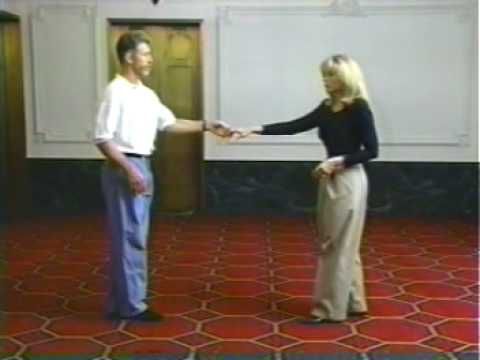 It’s like Netflix for Dancers!
It’s like Netflix for Dancers!
Powered by Convert Plus
Powered by Convert Plus
Powered by Convert Plus
Powered by Convert Plus
Powered by Convert Plus
How to Swing Dance | The 2023 New Dancer’s Guide
Have you ever wanted to know how to swing dance? While learning how to swing dance certain variations are more complicated than others, all of the dances begin with a few basic steps that aren’t too hard to learn.
Lace up your dancing shoes and read further to discover how simple and fun it can be to learn how to swing dance!
Jump to Section
- Learn How to Swing Dance
- Swing Dance History
- Swing Dance Basic Steps
- Country Swing Dance
- East Coast vs. West Coast Swing Dances
- Fun Swing Dance Moves
- How to Swing Dance Solo
Learn How to Swing Dance
Is Swing Dance Hard to Learn?
If you’re a complete beginner to dancing, don’t worry. Learning how to swing dance isn’t overly complicated, and with some practice learning a few basic steps, you’ll be ready to incorporate variations and a flair of your own in no time.
Learning how to swing dance isn’t overly complicated, and with some practice learning a few basic steps, you’ll be ready to incorporate variations and a flair of your own in no time.
So, when it comes to learning how to swing dance, is swing dance hard to learn? The short answer is: no! But it becomes even easier with the guidance of a highly rated dance instructor.
Swing Dance Lessons
As with learning anything new, it helps to have an expert guiding you through the process. The same goes for dancing. If you’d like to learn how to swing dance, look for dance classes in Colorado Springs, dance classes in San Diego and dance classes in Las Vegas wherein a talented dancer will lead an engaging, fun course designed to ease the transition into learning these new steps!
You’ll get a unique and exciting workout in whilst learning something new: how to swing dance with style. Both beginners and experts alike will find that these dance classes near you are a fun way to switch up your routine and one of the best ways to learn to dance.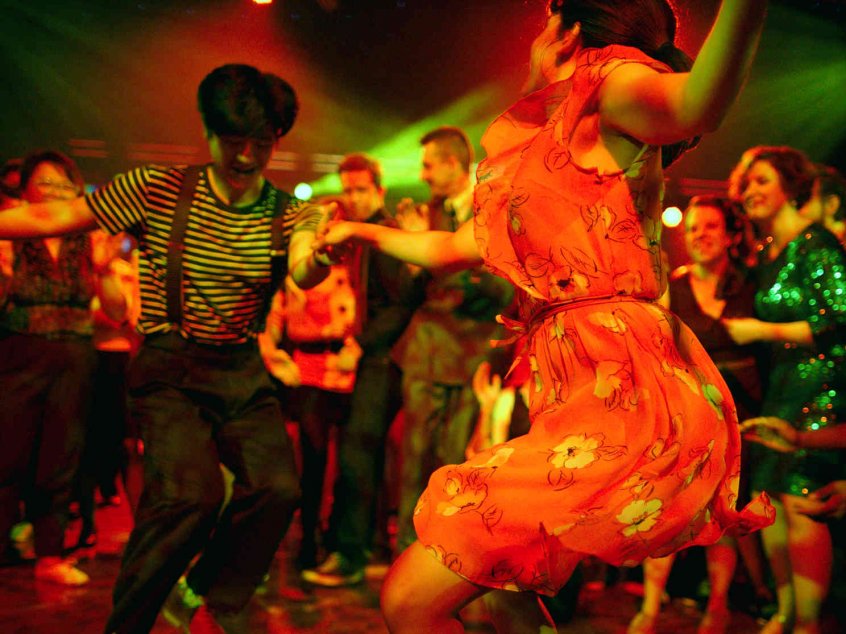
You may decide to sign up for online dance classes, where you will still receive some of the best dance instruction around, right from the comfort of your own home, so there’s no pressure!
via CanvaSwing Dance History
Do you know that the swing dance has influenced countless popular dancing styles since the 1920s? When you think of the roaring ‘20s, images of rowdy speakeasies, jazz bands, swanky parties and swing dancing likely come to mind.
As jazz music began to develop in the 1920s, so did the swing dance and others like it, as crowds of people learned how to swing dance. Certain forms of jazz music are actually referred to as “swing music” for this reason.
According to the Chicago Swing Dance Society, majorly influential artists, including Ella Fitzgerald, Duke Ellington and Billie Holiday, are known for their impact on swing music throughout the early 1900s.
The dance has evolved since its pioneering days, and now encompasses numerous variations, including the Lindy Hop, the Jitterbug, the East Coast Swing, the West Coast Swing, Country Swing and others, which makes learning how to swing dance a popular hobby from coast to coast.
Swing Dance Basic Steps
Whether you decide to sign up for dance classes with a professional to learn how to swing dance or you’d like to give swing dance a try on your own, it helps to understand the basics of the dance before you actually get moving. Read on for some simple ways to get started.
Swing Dance Count
Before you can master how to swing dance, ffirst you must learn to count to the swing dance beat. These dances typically follow a six- or eight-count rhythm. The basic count is a rock step (1, 2), a triple step (3 and 4) and another triple step (5 and 6).
Five Basic Steps of Swing Dance
-
To start with the rock step, step backwards with your left foot moving behind you, and step forward with your right foot.
-
For the first triple step, you’ll step to the side with your left foot, the same way with your right foot, and again with your left foot.
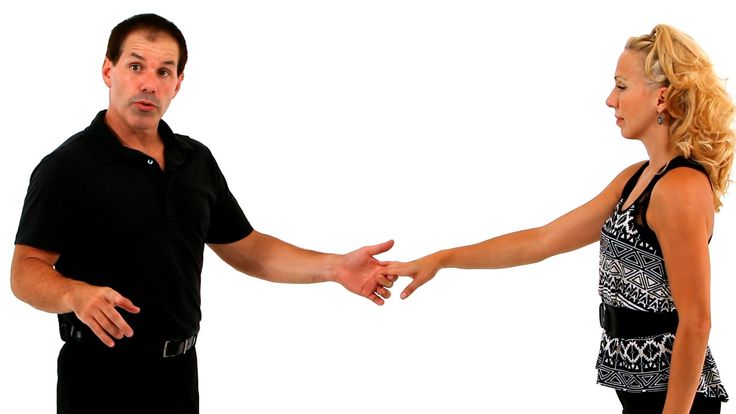 So, to the beat of 3-and-4, you’ll step left, right, left.
So, to the beat of 3-and-4, you’ll step left, right, left. -
Then, you’ll repeat this triple step in the opposite direction, so that you are moving right, left, right.
-
If this dance is being done with a partner, the leader typically starts on the left foot while the follower starts on the right foot.
-
Next, it's time to incorporate the swing! All this means is that after doing the basic steps (rock step, triple step, triple step), you’ll pivot 1/4 of the way to your left, while your partner pivots 3/4 to their right, and then you’ll do a triple step.
Country Swing Dance
As aforementioned, the swing dance has been adapted in various ways to a variety of music forms. One popular swing variation is the country swing dance. When it comes to how to swing dance in the country variation, you’ll learn to incorporate more twists, turns and other fun moves as you dance with your partner. Read further to learn how to swing dance the country swing dance.
When it comes to how to swing dance in the country variation, you’ll learn to incorporate more twists, turns and other fun moves as you dance with your partner. Read further to learn how to swing dance the country swing dance.
Country Swing Dance Moves
-
First, it’s important to distinguish who is the “leader” and who is the “follower” in your dance. As you join hands to dance, the leader will have their hands facing upwards while the follower’s hands are facing downwards.
-
After your first rock step, you’re going to walk towards each other rather than moving side-to-side. As your partner steps forward with their left foot, you’ll step forward with your right, and then repeat with the opposite feet. This dance is done with an eight-count beat, so you’ll be taking eight steps.
-
Once you’re comfortable with those basic swing dance moves, you can incorporate a spin, wherein you are still doing the basic steps, but as you both hold hands, you are turning your bodies rather than staying in one place.
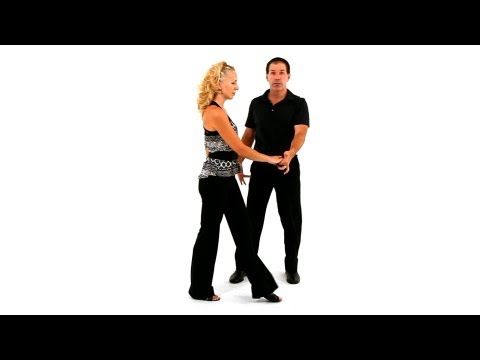 Then you can start to incorporate some of the following moves into your dance.
Then you can start to incorporate some of the following moves into your dance.
Tip: Don’t forget to stay loose when learning how to swing dance! There’s no room for stiffness, especially in the country swing dance.
via CanvaEast Coast vs. West Coast Swing Dances
What is the Easiest Swing Dance to Learn?
The East Coast swing is likely the easiest for when it comes to learning how to swing dance. It contains the most basic steps, and many other variations are built off of this version.
In fact, the basic steps listed above are exactly what the East Coast swing dance is. It consists of a rock step followed by two triple steps. However, you can make the dance your own by deciding whether to step side-to-side with your partner or front and back.
What is the West Coast Swing?
When learning how to swing dance in the West Coast version, you will usually have to dance to a slower tempo than in the East Coast swing. This doesn’t mean that the West Coast swing is by any means a slow dance — it will just work well with a slightly slower tempo.
This doesn’t mean that the West Coast swing is by any means a slow dance — it will just work well with a slightly slower tempo.
The key difference between East Coast and West Coast swing is that East Coast swing is done at a pace of around 136-144 beats per minute, while West coast is done around 102-114 beats per minute.
West Coast Swing Steps
A West Coast swing dance incorporates a “sugar push,” which means that your partner and you will be facing each other and walking forward and backward together. While you take two steps backwards, your partner will take two steps forward, then take two steps in place at the same time before repeating the move in the other direction.
After the sugar push, you and your partner will perform a “sugar tuck.” After the last step in place of the sugar push, the follower will turn away instead of simply stepping back. Then, they’ll triple step their way into a half circle, and face the leader once again.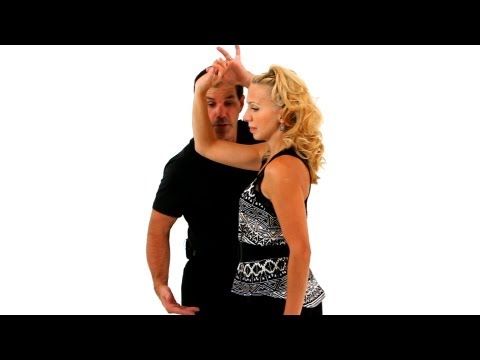
The biggest distinction for the West Coast swing is that the entire dance is performed in a sort of linear way, whereas the East Coast dance follows a more circular pattern. Either of these styles are a greta starting point for those in the beginning stages of learning how to swing dance.
via CanvaFun Swing Dance Moves
Hammerlock
The hammerlock comes from doing turns with your partner. Rather than holding one hand while your partner turns around, you will both hold both of each other’s hands.
This way, once one partner turns, you’re in a sort of, well, hammerlock, wherein one hand will be held down and the other hand will be raised above your partner’s head as the turn. Once the turn is completed, the lower hand will be behind your partner’s back.
Cuddle
The cuddle is kind of exactly what it sounds like. In this move, you and your partner will do the beginning of a hammerlock, but in the end, your partner will be in front of you, facing the same direction as you, while your hands are held in front of your partner’s body.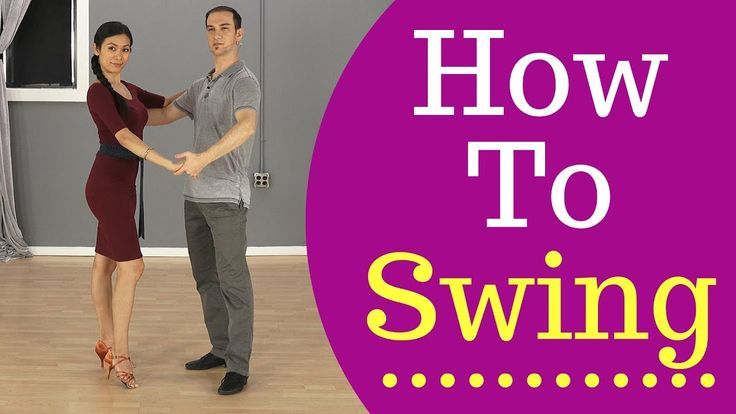
Lean
While in the cuddle, you would typically simply reverse the move so that your partner turns out of the cuddle back into facing you.
For a lean, you (as the leader) would instead turn your body to open up to allow your partner to continue their turn all of the way until you are both only holding hands with your inside hands, and your outer hands are free and you are both facing forward.
Then, your partner would simply lean against you, so that your sides are touching.
Jumpin’ Joe
The Jumpin’ Joe move is great for upbeat tempos and lively dances. It’s very simple, and works best when the leader is shorter in height than the follower. In the move, leaders will spin their partners and then bring their arm over their head while jumping in the air.
Tunnel
For those of you who want to learn how to swing dance and how to incorporate some intricate, impressive moves, the tunnel is for you.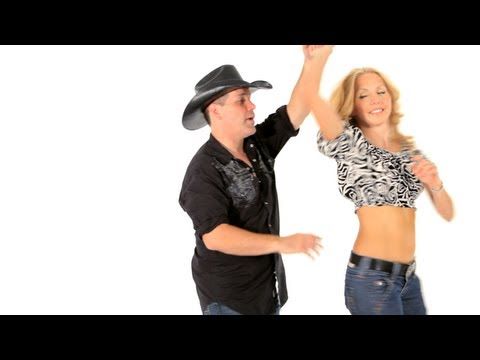 This will take some practice with a partner, so be patient!
This will take some practice with a partner, so be patient!
The tunnel is a move that involves several inward twists while you and your partner are holding hands, so that it sort of looks like one partner is going through a “tunnel,” which refers to the other partner’s arms.
via CanvaHow to Swing Dance Solo
When learning how to swing dance, you might ask yourself: can you swing dance solo? When it comes to practicing the dance or taking online dance classes, a partner may not always be available to you. Don’t worry, we’ve got the answers.
Can You Swing Dance by Yourself?
Although swing dancing is typically performed and practiced between two partners, it can certainly be practiced with just one person. Learning how to swing dance by yourself is simply a way to practice and master the basic swing dance steps.
When you are swing dancing alone, it does help to act as if you are dancing with a partner. What that means is that you should dance with your arms out and in position as if a partner were with you, so that when you do do the dance with a partner, it will feel practiced and natural.
What that means is that you should dance with your arms out and in position as if a partner were with you, so that when you do do the dance with a partner, it will feel practiced and natural.
When practicing how to swing dance on your own, pay attention to your footsteps and decide whether you’re dancing as a leader or follower, as your moves will differ slightly, and you want to be ready for when you do end up dancing with a partner.
Solo swing dancing is great for learning to master your posture, footwork, rhythm and overall confidence in the dance!
via CanvaNow that you know how to swing dance, get out on the dance floor to test your moves! As you learn how to swing dance, you’ll see that it simply takes practice of simple steps in order to feel more comfortable including some fun variations of your own.
Don’t forget to check out dance classes near you if you think you could benefit from some extra help to learn how to swing dance.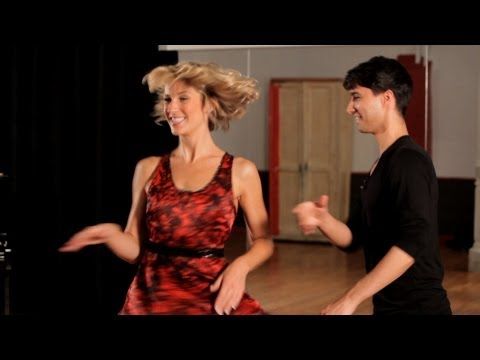
For even more creative ideas and inspiration, check out other experiences happening on Classpop!
Related Articles
A Beginner's Guide to Bachata DancingA Beginner's Guide to Cumbia Dancing
How to Belly Dance (With Confidence!)
How to Line Dance Like a Pro
How to Slow Dance With Style
How to Waltz Your Way to Becoming a Ballroom Pro
How to Salsa Dance Beginner’s Guide
Swing through life Online publication "Elements of Dance"
What is it about this dance that has not let it sink into oblivion? Does swing have a special secret of popularity?
The name "swing" combines many dance styles - Charleston, Lindy Hop, Balboa, Boogie Woogie, Country Swing, Rock and Roll, Modern Jive, West Coast Swing, Hollywood Style, Imperial Swing, Lindy, Blues (dance ), Shag and others. All these dances are characterized by a syncopated (shortened) rhythm.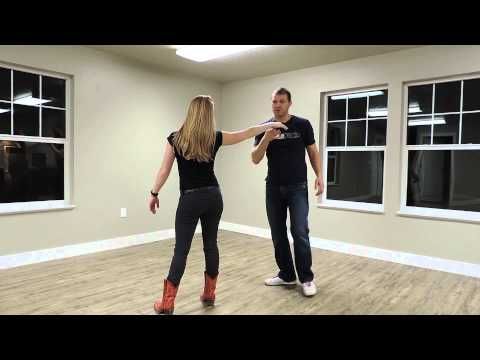 And they all come from jazz.
And they all come from jazz.
A renaissance of coupled social dances began around the world in the late 1980s. Those trends that are neither pop, nor ballroom, nor historical, nor folklore are called social, but proclaim their idea - to be an accessible entertainment for the broad masses of the people. Some social dances are so popular that they have international significance. Including swing.
The term originated from the English swing - “swing”, “sway”, “twist”. The most recognizable swing figure is the "unwinding" of the partner, her rejection and invariable return to the partner. Classic swing (if I may say so) is a continuous positive and unbridled fun, many turns, couples flying to the side, jumps and leg swings. In this dance, unlike ballroom dances, the whole body passionately participated in the dance "from head to toe." It was freedom!
The 20-year-old “Swing Era” at the beginning of the last century speaks about the wild popularity that accompanied swing dances. He determined the worldview, lifestyle, clothing style and the history of several generations. But…
He determined the worldview, lifestyle, clothing style and the history of several generations. But…
there was music in the beginning…
20s of the 20th century. The United States had just recovered from the effects of the Civil War, and the Great Depression of the 1930s was still ahead of them. In the former slave South, African Americans at that time had long cultivated their music, playing ragtime, dixieland and spiritual - lively and exciting jazz rhythms. But for the time being, the national recognition of jazz was hampered by racial discrimination that prevailed in the southern states.
The wave of popularity of swing and blues (the two main jazz styles that were performed in a specific dance style) swept across America as talented musicians began to leave New Orleans and migrate to Chicago, St. Louis and further to the North. Among them was Louis Armstrong, who is rightfully considered the father of jazz. As a young man, he played in New Orleans, then moved to Chicago, where he worked in two bands (Creole Jazz Band and Fletcher Henderson Band). It was there that the first popularity came to him and a phenomenal musical career began.
It was there that the first popularity came to him and a phenomenal musical career began.
In the 1920s, a huge stream of musicians from the South rushed to Harlem, the African-American area of New York. Here, in Harlem, such musical styles as swing, Charleston, and a little later, Lindy begin to emerge. The solemn procession of swing begins with the famous Cotton Club and Savoy Ballroom, where two black musicians Count Basie and Duke Ellington not only perform jazz compositions, but experiment with music. Their virtuoso improvisations send irrepressible energy into the hall, which forces those present to have fun and dance.
Soon swing simply "explodes" the society. People got what they had long dreamed of. Swing turns every day into a holiday, it becomes a great entertainment available to everyone, a fun and relaxed form of recreation that allows you to relax and have a great time. Huge dance halls filled with thousands of people. Whites and blacks "annealed" together to the play of large orchestras (big bands).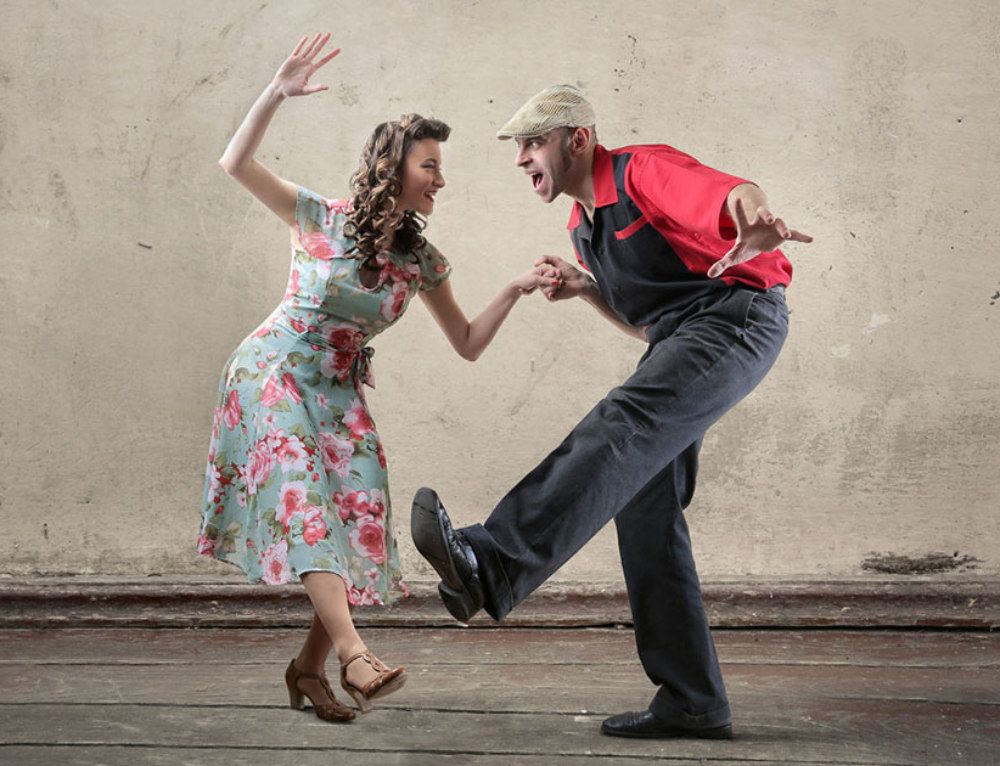
The first dance swing is called the Charleston. He perfectly matches the newly born music and becomes the king of the dance floors. The energetic Charleston was a real dance craziness. Fans of active movements famously "thrown" their feet with their heels out and provocatively turned their feet with their toes inward. A cheerful and carefree dance fell in love with millions, performed solo and in pairs. It is the Charleston that is considered the progenitor of the Lindy Hop.
The Lindy Hop has become the most popular swing dance. It is characterized by a more complex form, flexibility of rhythmic structure and unlimited possibilities for improvisation and spontaneous creativity. The crazy rhythm in it is adjacent to the slow performance and almost feline plasticity of the dancers. Lindy hop can be danced to almost any jazz and blues music. They say that the spirit of real freedom lives in this dance.
The jazz boom eventually spawned many dance styles on an 8-part basis.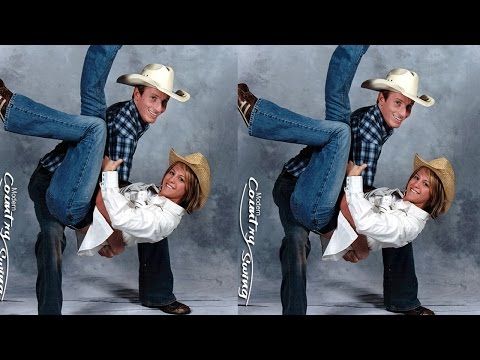
Balboa with his fast footwork and close contact between partners, slow blues, naughty and spontaneous boogie-woogie, democratic country swing, incendiary jive and rock and roll, stylish West Coast Swing - among swing dances everyone can find what he wants. like it.
What is the secret?
The wild popularity of these dances in the past and the rapidly growing interest in them in the present are explained very simply. All directions of swing originated as social dances. They were and remain available to all groups of people, all genders, ages, political views and social status. Schoolgirls and housewives, respectable businessmen and carefree students, artists, economists and programmers dance in swing style. To learn any of the listed dances, you do not need to have initial dance training, special plasticity and abilities. It is enough to have a desire to "burn out" at discos and swing parties and be able to count up to 8. What is fascinating in swing is that there are no canons of performance, first of all it is dynamics and improvisation. Knowing the basic movements, you can pair up with a complete stranger and the dance will still work out. Moreover, the partner has the same opportunity for improvisation as the partner, because most swing dances are performed both in a closed position and in an open position.
Knowing the basic movements, you can pair up with a complete stranger and the dance will still work out. Moreover, the partner has the same opportunity for improvisation as the partner, because most swing dances are performed both in a closed position and in an open position.
These dances in everyone cause a happy smile and inexplicable delight inside. They are danced for their own pleasure, recharging with energy and a splash of emotions. Swing has been "tasted" by those who are tired of banal entertainment in the form of going to the cinema, cafes or visiting. It gives a wonderful opportunity to warm up after a working or school day, meet interesting people, cheer yourself up, and, of course, this is a way to shine at any party.
Until recently, swing dances were considered exclusively retro. But the drive and challenge that they carry, this energy, lyrics and flirting, complete emancipation and fooling around could not remain within the framework of "retro" and not hurt today's youth.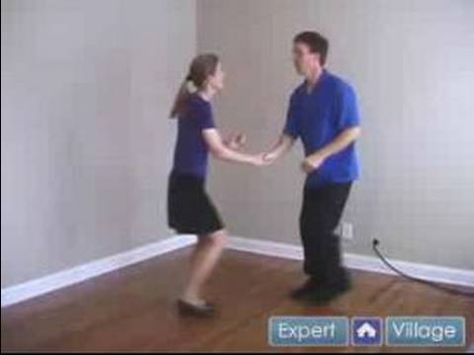 And today, Lindy Hop, for example, is a very fashionable youth phenomenon.
And today, Lindy Hop, for example, is a very fashionable youth phenomenon.
Who knows, perhaps the invitation "Let's swing!" soon it will be available at any modern disco!
West Coast Swing. - Dancing rock and roll - LJ
Since there are attacks about my "dance color blindness" from advanced dancers who "have been in motion for more than 15 years", and replicas like "we don't dance" then I think it's worth sorting it out with the fact that "we dance", what historical roots it has, and what it is called. Doesn't it bother anyone in the community that when they hear the name of the dance style "rock and roll", people imagine a completely different dance? Not?
Any dance changes over time, so I want to first show the community what is known today as West Coast Swing. The modern version looks something like this. In my personal opinion, it's a bit too "pomaded and powdered", or something, but still, I think it's worth a look.
And so that this time there will be no cries and scandal, here is a historical note with an illustration for you.
It is believed that VKS originated from Lindy Hop. According to reports, Dean Collins, who appeared in Los Angeles around 1937 year. Actually, thanks to this, the style got its name, literally translated as "west coast dance".
Arthur Murray, speaking of this new direction in 1947, commented: "There are hundreds of regional dances of the Jitterbug type. Every state seems to feel obliged to find some variation of its own"(1). One of his dance instructors, Laure Haile, documented the style of swing popular in the Los Angeles area. She named it Western Swing. But Murray used this name for another dance back in the late 30s (2). And since Hale first published her notes (which included "Western Swing") for the needs of the Arthur Murray Dance Studio in Santa Monica (Santa Monica Arthur Murray Dance Studio (3)) only 1951, needed an alternate name. So the dance got its new name "Sophisticated Swing" (which literally translates as "Sophisticated / sophisticated swing"). With this name, the dance existed throughout the fifties.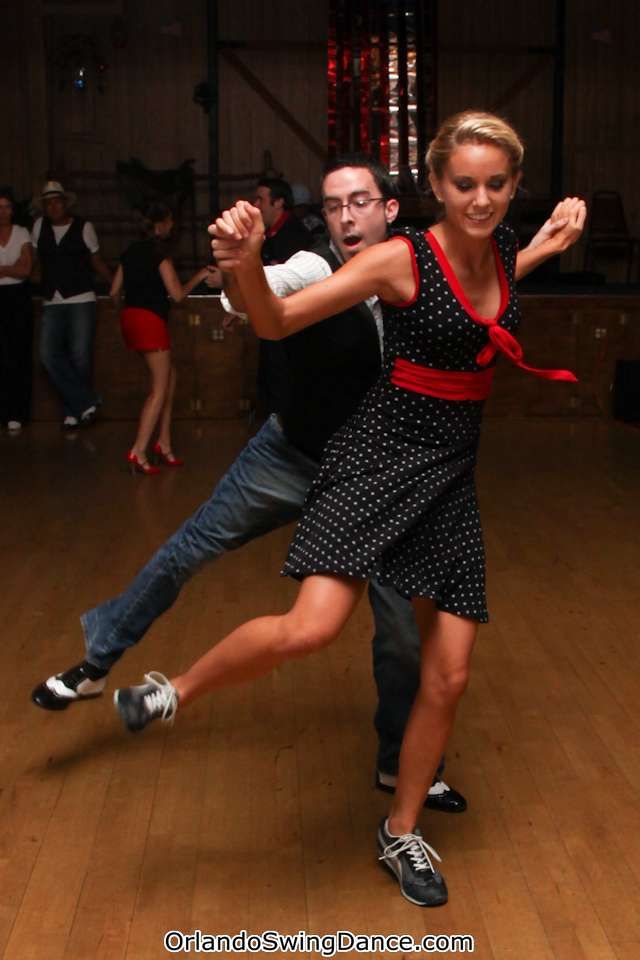 (4)
(4)
Western (aka sophisticated) swing, country boogie (country boogie) and a little less well-known jump blues (jump blues) were extremely popular on the West Coast of the USA for 40 -x and 50s. True, in 1954 they were united under the name "rock and roll", but the popularity of this did not decrease.
West Coast Swing was the main dance in the rehearsal scene in the 1958 film Hot Rod Gang. He performed there under the song from the album Gene Vincent (Gene Vincent) "Dance to the Bop". This music alternates between very slow losses and fiery passages with a fast rhythm, so characteristic of rock and roll music (rockabilly).
The choreographer of this scene, Dick DiAugustine, included movements that were very recognizable later. For example, chicken walk (chicken walk, literally translated as "chicken walk"), swing out (swing out) exit from a closed position, and so on. And he mixed them with the characteristic step-step-triple step-triple step (walk walk triple step triple step) of partners with an ending on the "edge of the slot". In that variation, each last triple step in the partner's combination was finished by transferring the weight to the left thigh and placing the right foot on the heel (toe up). In addition, the dancers performed classic Lindy-hop flips and independent "unpaired" ligaments, which had nothing to do with swing at all.
In that variation, each last triple step in the partner's combination was finished by transferring the weight to the left thigh and placing the right foot on the heel (toe up). In addition, the dancers performed classic Lindy-hop flips and independent "unpaired" ligaments, which had nothing to do with swing at all.
The modern name of the dance "West Coast Swing" was mentioned in Arthur Murray's obscure teacher's book for dance studios back in the 50's. gg. However, the teachers themselves continued to use the term Western Swing in their records and schedules. in the circles of dancers and was not used until the end of the 60s.
Blair credits the invention of the West Coast Swing name to Jim Bannister, editor of the Downey-based Herald American. The new name arose because, having given the article to the editor, Blair found out that "everything Western to readers from the city of Downey in 1958 did not impress at all."
West Coast Swing, as taught by Murray, was danced with simple steps (walk) on 5 and 6, which went by inertia behind the triple step on 3-and-4.